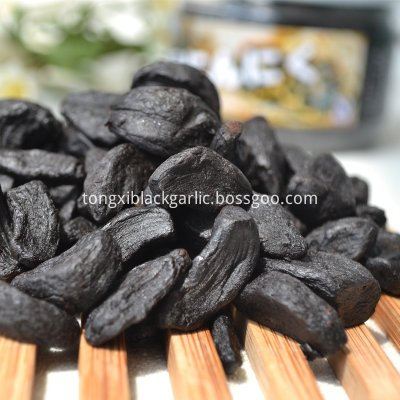1. The site is suitable. The location of the farms must meet the requirements of sanitation and epidemic prevention, and be far from the traffic arteries, industrial areas, residential areas and polluted areas, and use barren hills and barren slope lands as far as possible. The air in the stadium is fresh and the water source is sufficient. The water quality must meet the requirements for the production of pollution-free livestock and poultry, free of pathogenic microorganisms, parasite eggs, heavy metals, and organic corrupt products. 2, the environment is comfortable. Pay attention to measures such as exhaust, dust reduction, and noise elimination to create good environmental conditions. The practice of breeding shows that chickens on the net can easily cause sacral injuries and thoracic cysts. Pigs on the ground surface of the soil can easily lead to limb and foot disease. Rabbits in wire cages can easily cause hair damage. The farm must select the appropriate housing and cages to provide animals with a comfortable living space. 3, nutritional balance. The diet composition of animals should be varied, and energy, protein, amino acids, minerals, vitamins, and other nutrients should be filled as needed. Try not to add antibiotics to the feed to prevent damage to the endogenous infections caused by disruption of the balance of the intestinal flora, and to prevent the development of drug-resistant "superbugs" that pose a threat to human life. 4, feed safety. The feed must be of good quality, free from contamination and mildew. Feeds containing natural toxins must be detoxified and the dosage must be controlled. Leftovers should be cleared in time to prevent spoilage. It is forbidden to pour all kinds of domestic drowning water and domestic waste into livestock and poultry. It is forbidden to use various illicit drugs and additives in livestock and poultry feeds to prevent drug residues from causing harm to the human body. 5, prevent diseases. To develop scientific immunization procedures and use suitable vaccines, immunoenhancers may be used to enhance the immune effect. Commonly used immunopotentiators include liposomes and Chinese herbal medicines. Regular monitoring of antibody levels and rapid early diagnosis of diseases are also technical safeguards for healthy breeding. 6, careful disinfection. It is necessary to fully consider the possible damage to livestock and poultry caused by disinfectants, and to ensure that livestock and poultry will not be exposed to excessive stress before and after the disinfection process and disinfection. When livestock is sterilized, surfactant-type disinfectants that are non-corrosive and non-toxic to skin mucous membranes must be selected, such as benzalkonium, chlorhexidine, 100-toxin, livestock and poultry, etc.; when disinfecting drinking water, halogens that are easily decomposed should be used. Disinfectants, such as bleach, calcium hypochlorite, etc. Dairy farms are prohibited from using complex phenolic disinfectants. 7, treat animals. In the aspects of environmental transformation, corral design, daily management, and transportation methods, we must fully consider the anatomy and physiology of livestock and poultry, as well as life instincts, and give humane feeding systems and management measures to prevent livestock and poultry from hunger and thirst. Injury, no fear, let the livestock and poultry eat comfortably and live comfortably. 8, control pollution. Farm excreta, garbage, and sewage contain a large amount of microorganisms, nitrogen, phosphorus, etc. If they are directly discharged into the outside world, they will seriously pollute the water source, destroy the soil structure, and harm the ecological balance. The odor gases in the farm will also deteriorate the air quality and affect the living environment of human beings. Breeding of livestock and poultry must take into account the impact on the environment. Not only proper disposal of excrement and sewage, but also attention should be paid to adjusting the dietary structure to reduce the excretion of pollutants. 9, system norms. Establish a regular inspection system to ensure that keepers can observe animals and feed back information in a timely manner; implement a closed management system to prohibit irresponsible personnel from entering and leaving farms; establish a veterinary medicine file system to ensure that veterinary drugs used are purchased from formal sources by regular manufacturers. Produce qualified veterinary drugs to ensure that veterinary drugs are used as required; implement a health check system to ensure the health of husbandry and management personnel and prevent zoonotic infectious diseases from entering the field through the body. 10, assessment and testing. Regularly conduct health tests on livestock and poultry groups, carry out safety inspections and assessments of environmental conditions and management systems, and carefully identify potential safety hazards. After checking out individuals that have already carried pathogens, they must perform isolation therapy and health care, and timely adjust feeding and management systems and immunity. Preventive measures give livestock and poultry a green barrier to a healthy life and safe life.
Peeled Black Garlic is peel them first, and then fermentation,It's easy to eat.
We know that garlic itself is a very good health food, while the role of black garlic is really amazing. For diabetes, hypertension, high cholesterol, cancer prevention and treatment have a very significant effect.
Once you have peeled the clove it is ready to eat.Black Garlic
should have 24 months shelf life if stored in the correct conditions.
Peeled Black Garlic,Peeled Fermented Black Garlic,Fresh Peeled Black Garlic,Organic Peeled Black Garlic Zhucheng Tongxi Commercial And Trade Co.,Ltd. , https://www.blackgarlicgroup.com
